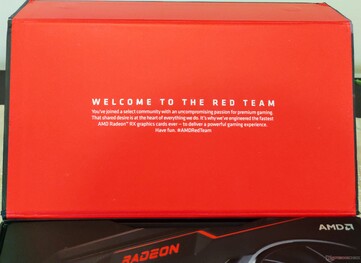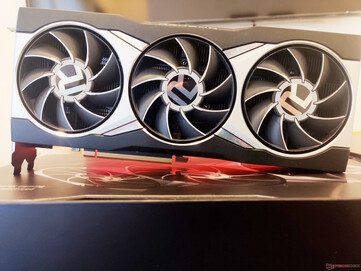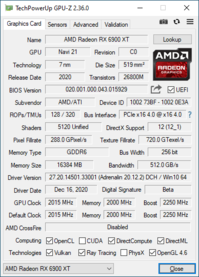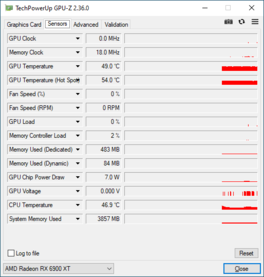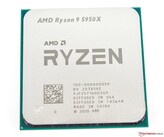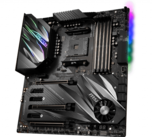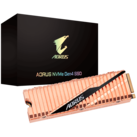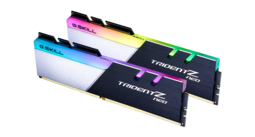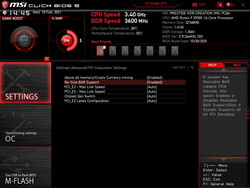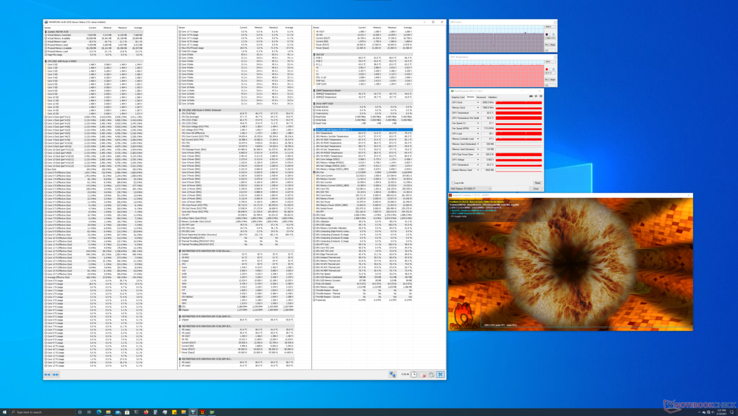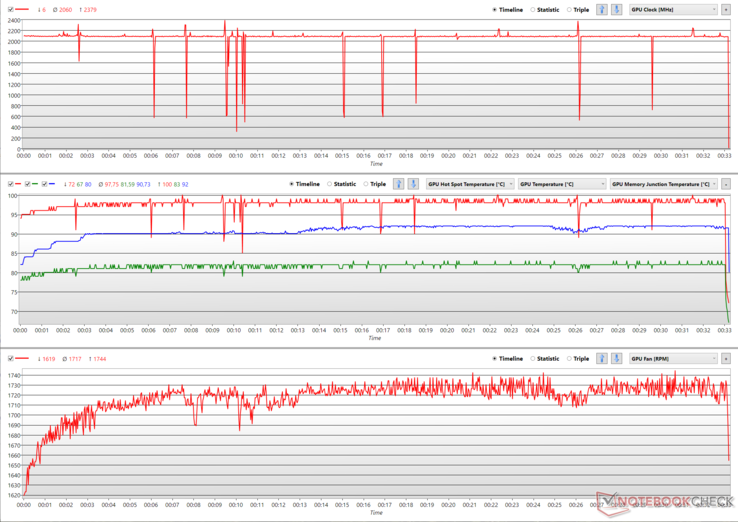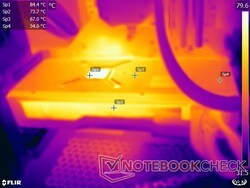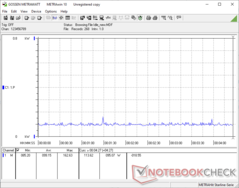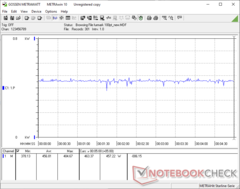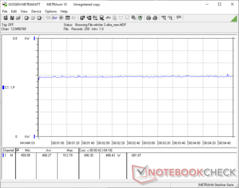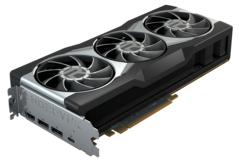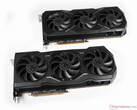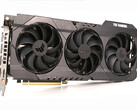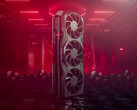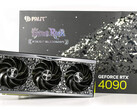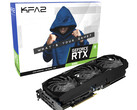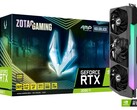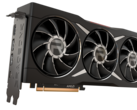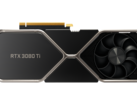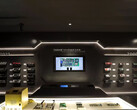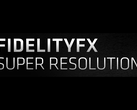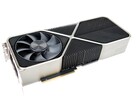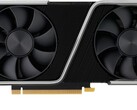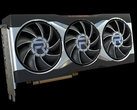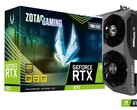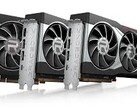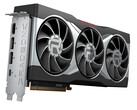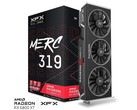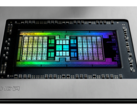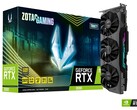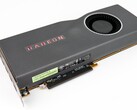AMD Radeon RX 6900 XT Review: Near-RTX 3090 performance for US$500 less but only marginally better than RX 6800 XT
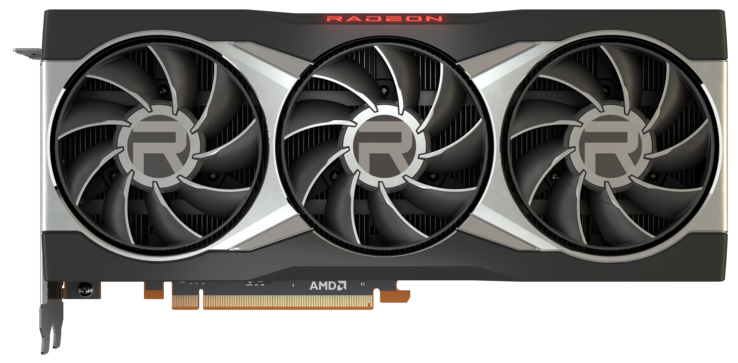
AMD has been going strong against Intel in the CPU space with Ryzen, but the Radeon unit has lagged significantly behind the competition so far. The last time we saw an AMD flagship graphics card being mentioned in the same breath as that of NVIDIA's was the Fiji-based Radeon R9 Fury X that competed with the NVIDIA Maxwell GeForce 980 Ti back in 2015.
For a long time, NVIDIA's flagship Turing parts remained unchallenged. AMD's Vega 56, Vega 64, and the Radeon VII did little to give NVIDIA sleepless nights. It was only in July 2019 that AMD tasted moderate success with the Navi 10-based Radeon RX 5700 XT, but that was at best comparable to the GeForce RTX 2070 Super.
All that is history now. Last October, AMD officially unveiled the Radeon RX 6000 series cards, comprised of the RX 6800, RX 6800 XT, the RX 6900 XT and more recently, the RX 6700 XT, with the promise of taking on NVIDIA's high-end Ampere offerings such as the RTX 3070, RTX 3080, and RTX 3090 for 1440p and 4K gaming.
The RX 6900 XT is being pegged as an RTX 3090 competitor, at least in terms of pure raster performance (with caveats, of course). NVIDIA cards currently have the upper hand when it comes to features such as ray tracing and AI-based super sampling. However, the RX 6900 XT has a few tricks up its sleeve too.
In this review, we put the top dog Navi 21 XTX card through its paces and see whether it has the guts to take on NVIDIA's Ampere Goliath.
Comparison of the Radeon RX 6900 XT with other AMD GPUs
| Specifications | Radeon RX 6900 XT | Radeon RX 6800 XT | Radeon RX 6800 | Radeon RX 6700 XT | Radeon RX 5700 XT | Radeon RX 5700 | Radeon VII |
| GPU | Navi 21 XTX | Navi 21 XT | Navi 21 XL | Navi 22 | Navi 10 XT | Navi 10 XL | Vega 20 XT |
| Manufacturing Process | 7 nm | 7 nm | 7 nm | 7 nm | 7 nm | 7 nm | 7 nm |
| Compute Units | 80 | 72 | 60 | 40 | 40 | 36 | 60 |
| Shading Units | 5,120 | 4,608 | 3,840 | 2,560 | 2,560 | 2,304 | 3,840 |
| Texture Mapping Units | 320 | 288 | 240 | 160 | 160 | 144 | 240 |
| Ray Accelerators | 80 | 72 | 60 | 40 | -- | -- | -- |
| Base Clock | 1,825 MHz | 1,825 MHz | 1,700 MHz | 2,321 MHz | 1,605 MHz | 1,465 MHz | 1,400 MHz |
| Game Clock | 2,015 MHz | 2,015 MHz | 1,815 MHz | 2,424 MHz | 1,755 MHz | 1,625 MHz | 1,750 MHz |
| Boost Clock | 2,250 MHz | 2,250 MHz | 2,105 MHz | 2,581 MHz | 1,905 MHz | 1,725 MHz | 1,802 MHz |
| Infinity Cache | 128 MB | 128 MB | 128 MB | 96 MB | -- | -- | -- |
| Memory Bus Width | 256-bit | 256-bit | 256-bit | 192-bit | 256-bit | 256-bit | 4096-bit |
| Memory Bandwidth | 512 GB/s | 512 GB/s | 512 GB/s | 384 GB/s | 448 GB/s | 448 GB/s | 1,024 GB/s |
| Memory Size | 16 GB GDDR6 | 16 GB GDDR6 | 16 GB GDDR6 | 12 GB GDDR6 | 8 GB GDDR6 | 8 GB GDDR6 | 16 GB HBM2 |
| TBP | 300 W | 300 W | 250 W | 230 W | 225 W | 180 W | 295 W |
A tour of the AMD Radeon RX 6900 XT
Upon opening the box, we were greeted by a "Welcome to the Red Team" message. The packaging includes a Radeon cardboard in which a quick start guide and an "R" keyboard key are enclosed. The "R" key is fashioned in typical Radeon font and allows RGB light to pass through. Unfortunately, our package didn't come with an AMD-branded mouse pad included, which should, however, be there in the retail box.
Coming to the card itself, we see that AMD has ditched the blower-style cooler found on the RX 5700 XT reference card and has instead opted for a triple-fan cooler. The fans have the distinct "R" logo on them and are built into a bright silver metal frame. On the top, we find a red trim that runs along the length of the card and also an RGB Radeon logo.
The Radeon logo glows in red by default, but you can download a CoolerMaster RGB LED tool for cycling between the colors. We would hazard a guess that CoolerMaster has something to do with the reference design's cooling system going by what we've seen before with Ryzen's Wraith Prism stock cooler.
Staying on the top, we see two 8-pin power connectors that are placed towards the right edge — no 12-pin fancy alien antenna stuff like NVIDIA, which can be good or bad depending on your preference.
On the rear, we have two DisplayPort 1.4 outs, one HDMI 2.1 out, and a USB Type-C with DisplayPort. It is good to see AMD offering a USB Type-C port at a time when NVIDIA ditched it apparently to save some power on the Ampere cards.
It's not exactly news, but it's been some time since AMD has waved goodbye to CrossFire support so there's no CrossFire Bridge port available. NVIDIA, on the other hand, still offers an NVLink connector on the RTX 3090.
Overall, the RX 6900 XT sports a neat 2.7-slot reference design, which should have near-universal appeal.
The Radeon RX 6900 XT is based on the RDNA 2 Navi 21 XTX GPU — a 7 nm part that offers 80 compute units (CUs) i.e. 5,120 shading units. The card has a base clock of 1,825 MHz. For most applications, the GPU runs at 2,015 MHz, which AMD advertises as the Game Clock, while boosting up to 2,250 MHz. Depending on the workload and available thermal headroom, even higher boosts are possible as well.
Like the RX 6800 XT, the RX 6900 XT also offers 16 GB GDDR6 VRAM on a 256-bit bus yielding a memory bandwidth of up to 512 GB/s. AMD has equipped the Radeon RX 6900 XT with a 128 MB Infinity Cache that sort of covers up for the slower (but more easily available) GDDR6 VRAM and the smaller 256-bit memory bus to achieve performance levels similar to what NVIDIA can with a bigger bus, more expensive GDDR6X VRAM, and higher memory bandwidth.
The Radeon RX 6900 XT is rated for a total board power of 300 W. During stress testing, we observed that the core alone can draw up to 255 W.
The test bench
We used an AMD X570 platform as the test bench for evaluating the RX 6900 XT. Our setup includes an AMD Ryzen 9 5950X processor paired with 32 GB (16 GB x) of G.SKILL Trident Z Neo DDR4-3600 RAM (timings 16-19-19-39) on an MSI Prestige X570 Creation motherboard.
A Gigabyte Aorus NVMe Gen4 1 TB SSD was used to run Windows 10 20H2 with the latest cumulative patches while benchmarks and games were installed on two 1 TB Crucial MX500 SATA SSDs.
Keeping the 16C/32T Ryzen 9 5950X cool was a Corsair iCUE H115i Capellix AIO cooler. The setup was housed in a Corsair iCUE 4000X RGB case with a Thermaltake Toughpower 850 W 80 Plus Gold as the power supply.
The RX 6900 XT was paired with a OnePlus U Series 55U1 smart TV running at 4K 60 Hz. Color output was set to Full RGB 4:4:4 pixel format in Radeon software and Windows desktop scaling was set to 100%.
We would like to thank AMD for providing the RX 6900 XT and the Ryzen 9 5950X, Corsair for the iCUE Elite Capellix AIO cooler and iCUE 4000X case, and OnePlus for the U series 55U1 4K TV.
Synthetic Benchmarks
In the majority of the 3DMark tests, the RX 6900 XT is on par or even better than the NVIDIA RTX 3090. The maximum leads are seen in 3DMark Fire Strike at up to 1440p. In the 4K Fire Strike Ultra, the lead reduces to about 11% over the average RTX 3090. Time Spy, though, shows the AMD and NVIDIA flagships to be more or less on par with each other.
The capabilities of the RDNA2 architecture when it comes to ray tracing aren't poor per se, but the shortcomings become quite evident in the Port Royal test wherein the RX 6900 XT perceivably lags behind the RTX 3080 by 15% and significantly behind the RTX 3090 by 24%. That being said, we do see the RX 6900 XT performing about 9% better than the average RTX 2080 Ti in this benchmark.
Unigine benchmarks show better scores in DirectX tests compared to OpenGL ones, especially in the Valley and Heaven benchmarks. In Superposition, the RX 6900 XT takes a beating in the 8K Optimized test trailing the RTX 3090 by 20%. This gap narrows significantly at lower resolutions, and we see the GPU trailing only by about 8% in the 4K Optimized benchmark.
| 3DMark 11 Performance | 42418 points | |
| 3DMark Fire Strike Score | 39057 points | |
| 3DMark Fire Strike Extreme Score | 25197 points | |
| 3DMark Time Spy Score | 17549 points | |
Help | ||
Compute Benchmarks
The RX 6900 XT puts up a decent show against the RTX 3090 in compute benchmarks. In ComputeMark, we see AMD's top offering trailing between 3% and 26% behind the RTX 3090 depending on the test. Interestingly, LuxMark seems to showcase the full might of RDNA 2's compute prowess with the RX 6900 XT showing a whopping 114% lead over the RTX 3090 in the Sala GPU-only test, though the card does take a hit by about 12% in the Room GPUs-only benchmark.
Performance in Geekbench 5.3 compute using OpenCL and Vulkan does not seem to be impressive with even the RTX 3080 offering marginally better performance than the RX 6900 XT in OpenCL. Though fortunes reverse in the Vulkan part of the test when compared with the RTX 3080, the RTX 3090 Founders Edition here still manages a comfortable 67% lead over the RX 6900 XT.
Professional applications
Navi 2x seems to show good performance gains in pro apps over the Navi 1x parts, and even the best of Ampere consumer offerings from NVIDIA. Although the Titan RTX and Quadro RTX 5000 are better choices overall when it comes to CAD/CAM, energy, automobile, and medical applications, individual component scores in the SPECviewperf tests show that the RX 6900 XT is no slouch, at least when it comes to specific 3D authoring and CAD workflows.
| AMD Radeon RX 6900 XT AMD Radeon RX 6900 XT, R9 5950X | AMD Radeon RX 6800 XT AMD Radeon RX 6800 XT, R9 5950X | AMD Radeon RX 5700 XT AMD Radeon RX 5700 XT (Desktop), R7 2700X | Nvidia GeForce RTX 3090 Founders Edition NVIDIA GeForce RTX 3090, R9 5900X | ASUS GeForce RTX 3080 ROG STRIX OC GAMING NVIDIA GeForce RTX 3080, R9 5900X | AMD Ryzen 9 5900X NVIDIA Titan RTX, R9 5900X | Acer ConceptD 9 Pro NVIDIA Quadro RTX 5000 (Laptop), i9-9980HK | |
|---|---|---|---|---|---|---|---|
| SPECviewperf 12 | -15% | -45% | -31% | -35% | 55% | 49% | |
| 1900x1060 Solidworks (sw-03) (fps) | 167 | 150 -10% | 89.6 -46% | 71.4 -57% | 71.1 -57% | 174.9 5% | 230.1 38% |
| 1900x1060 Siemens NX (snx-02) (fps) | 47.7 | 45.07 -6% | 35.27 -26% | 14.8 -69% | 13.27 -72% | 273.2 473% | 258.1 441% |
| 1900x1060 Showcase (showcase-01) (fps) | 241 | 223 -7% | 137.8 -43% | 239 -1% | 199.9 -17% | 191.1 -21% | 126.4 -48% |
| 1900x1060 Medical (medical-01) (fps) | 88.4 | 77.3 -13% | 46.9 -47% | 47.2 -47% | 50.8 -43% | 90.7 3% | 109.3 24% |
| 1900x1060 Maya (maya-04) (fps) | 151 | 118 -22% | 86.5 -43% | 190 26% | 184.6 22% | 188.3 25% | 179 19% |
| 1900x1060 Energy (energy-01) (fps) | 30.8 | 28.39 -8% | 12.72 -59% | 20.6 -33% | 18.47 -40% | 28.31 -8% | 26 -16% |
| 1900x1060 Creo (creo-01) (fps) | 127 | 119 -6% | 66.9 -47% | 74.8 -41% | 74.2 -42% | 173 36% | 172.1 36% |
| 1900x1060 Catia (catia-04) (fps) | 292 | 238 -18% | 158.8 -46% | 127 -57% | 126.1 -57% | 262.7 -10% | 220 -25% |
| 1900x1060 3ds Max (3dsmax-05) (fps) | 318 | 167 -47% | 173.8 -45% | 320 1% | 275.6 -13% | 292.6 -8% | 235.8 -26% |
| SPECviewperf 13 | -8% | -45% | -57% | -38% | 44% | 35% | |
| Solidworks (sw-04) (fps) | 214 | 193 -10% | 114.4 -47% | 82.9 -61% | 92.4 -57% | 196.4 -8% | 203.8 -5% |
| Siemens NX (snx-03) (fps) | 85.8 | 81.4 -5% | 61.3 -29% | 15.6 -82% | 23.22 -73% | 493.4 475% | 465.3 442% |
| Showcase (showcase-02) (fps) | 241 | 232 -4% | 137.6 -43% | 114 -53% | 190.5 -21% | 127.1 -47% | |
| Medical (medical-02) (fps) | 148 | 130 -12% | 82.8 -44% | 49.3 -67% | 91.8 -38% | 90.8 -39% | 133.4 -10% |
| Maya (maya-05) (fps) | 395 | 348 -12% | 220.3 -44% | 253 -36% | 360.2 -9% | 458 16% | 340.8 -14% |
| Energy (energy-02) (fps) | 60.6 | 58.4 -4% | 26.82 -56% | 26.6 -56% | 36.08 -40% | 52 -14% | 57.3 -5% |
| Creo (creo-02) (fps) | 292 | 276 -5% | 157 -46% | 176 -40% | 281.2 -4% | 346.5 19% | 319.8 10% |
| Catia (catia-05) (fps) | 468 | 412 -12% | 242.8 -48% | 111 -76% | 190.4 -59% | 374.8 -20% | 338.9 -28% |
| 3ds Max (3dsmax-06) (fps) | 317 | 284 -10% | 175.6 -45% | 180 -43% | 238.2 -25% | 291.3 -8% | 232.2 -27% |
| SPECviewperf 2020 | 5% | -37% | 64% | ||||
| 3840x2160 Solidworks (solidworks-05) (fps) | 112 | 108 -4% | 93.1 -17% | 153 37% | |||
| 3840x2160 Siemens NX (snx-04) (fps) | 85 | 81.7 -4% | 13.2 -84% | 347 308% | |||
| 3840x2160 Medical (medical-03) (fps) | 30.4 | 27.84 -8% | 9.95 -67% | 16.42 -46% | |||
| 3840x2160 Maya (maya-06) (fps) | 266 | 224 -16% | 181 -32% | 257 -3% | |||
| 3840x2160 Energy (energy-03) (fps) | 32.6 | 60.8 87% | 22.3 -32% | 58.2 79% | |||
| 3840x2160 Creo (creo-03) (fps) | 65.4 | 65 -1% | 68.1 4% | 113 73% | |||
| 3840x2160 CATIA (catia-06) (fps) | 44.6 | 42.4 -5% | 32.3 -28% | 78.2 75% | |||
| 3840x2160 3ds Max (3dsmax-07) (fps) | 121 | 114 -6% | 70.2 -42% | 108 -11% | |||
| Total Average (Program / Settings) | -6% /
-6% | -45% /
-45% | -42% /
-42% | -37% /
-37% | 54% /
54% | 42% /
42% |
Game benchmarks
In the vast majority of games tested, the RX 6900 XT performs on expected lines at 4K Ultra settings. The RX 6900 XT does seem to have an advantage over the NVIDIA cards in titles optimized for AMD hardware such as Assassin's Creed Odyssey and Assassin's Creed Valhalla. AMD's flagship card led the charts in Battlefield V, Hitman 3, F1 2020, and Forza Horizon 4 as well.
That being said, the RTX 3090 showed anywhere between 9% and 20% advantage in most titles we tested, sometimes going as high as 30% at 4K Ultra in Mafia Definitive Edition. The presence of eight additional compute units (CUs) in the RX 6900 XT does not seem to confer a significant advantage over the RX 6800 XT in gaming.
Ray tracing, though available, pales in comparison to the current generation Ampere cards. However, AMD still needs to be commended for achieving ray tracing performance that is mostly on par or at times somewhat better than the RTX 2080 Ti.
In The Witcher 3 stress test at 1080p Ultra settings, the RX 6900 XT offers a fairly good sustained performance close to 172 fps for the most part. However, we do see occasional throttling, which does drop the fps significantly. This can probably be attributed to a dip in clocks when the card comes closer to the hot spot or junction temperature of 110 °C.
AMD Smart Access Memory
Smart access memory (SAM) is AMD's fancy term for resizable base address register (BAR), a PCIe specification that allows the CPU to access the full GPU VRAM at all times (originally limited to 256 MB of GPU memory for 32-bit OS compatibility). Though all RDNA 2 GPUs support SAM out-of-the-box, they need to be paired with a Ryzen 5000 series CPU and a motherboard with a B550 or an X570 chipset (Ryzen 3000 CPUs on these motherboards are now supported as well). You may also have to look out for BIOS updates (AGESA 1.1.0.0 or newer) from your motherboard vendor that enable this feature.
In order to enable SAM, you need to navigate to the BIOS and enable both "Above 4G Memory/Crypto Currency Mining" and "Re-Size BAR Support" under PCIe Subsystem Settings. Unfortunately, there is no way to check SAM status via the driver.
While AMD seemed pretty excited about SAM during its Big Navi launch keynote, the real-world performance gains, if any, are seen only in a handful of games at the moment. In our testing, we found SAM to offer marginal fps increases in Borderlands 3 and Shadow of the Tomb Raider at QHD Ultra and 4K Ultra settings.
However, enabling SAM showed showed +18% at 1080p Ultra, +13% at 1440p Ultra, and +8% gains at 4K Ultra settings in Assassin's Creed Valhalla. SAM didn't seem to be of any benefit at 1080p Ultra in Forza Horizon 4, but we do see +11% and +13% benefits at 1440p Ultra and 4K Ultra, respectively. F1 2020 showed only minor gains at 1080p Ultra. Games such as Control, Hitman 3, and Watch Dogs Legion did not show any performance improvement or regression with SAM turned on.
With all new GPUs and motherboards now supporting resizable BAR, we expect more games to take advantage of this feature in the days to come.
| low | med. | high | ultra | QHD | 4K | |
|---|---|---|---|---|---|---|
| The Witcher 3 (2015) | 589 | 375 | 323 | 163.6 | 122 | |
| Shadow of the Tomb Raider (2018) | 248 | 222 | 213 | 199 | 163 | 86 |
| Forza Horizon 4 (2018) | 350 | 283 | 279 | 247 | 243 | 172 |
| Assassin´s Creed Odyssey (2018) | 124 | 117 | 106 | 98 | 99 | 68 |
| Battlefield V (2018) | 196 | 195 | 196 | 197 | 196 | 134 |
| Far Cry New Dawn (2019) | 141 | 126 | 123 | 118 | 117 | 101 |
| Metro Exodus (2019) | 274 | 214 | 154 | 123 | 102 | 66.7 |
| The Division 2 (2019) | 217 | 190 | 157 | 138 | 118 | 66.6 |
| Anno 1800 (2019) | 223 | 162 | 139 | 87.1 | 70.7 | 52 |
| Total War: Three Kingdoms (2019) | 429.7 | 263 | 180.3 | 141.3 | 92.9 | 44.9 |
| Control (2019) | 240 | 234 | 174 | 113 | 53.9 | |
| Borderlands 3 (2019) | 197 | 169 | 152 | 131 | 107 | 59.8 |
| Red Dead Redemption 2 (2019) | 208 | 196 | 150 | 98 | 82.1 | 54.6 |
| Doom Eternal (2020) | 624 | 480 | 416 | 411 | 328 | 185 |
| Gears Tactics (2020) | 495.8 | 338.1 | 249 | 175.1 | 136.4 | 74.1 |
| F1 2020 (2020) | 520 | 442 | 395 | 291 | 228 | 137 |
| Horizon Zero Dawn (2020) | 245 | 205 | 184 | 164 | 136 | 76 |
| Mafia Definitive Edition (2020) | 160 | 142 | 138 | 120 | 67 | |
| Watch Dogs Legion (2020) | 191 | 190 | 170 | 121 | 91.4 | 53.6 |
| Assassin´s Creed Valhalla (2020) | 227 | 169 | 142 | 148 | 115 | 68 |
| Call of Duty Black Ops Cold War (2020) | 298 | 198 | 169 | 153 | 115 | 68.1 |
| Immortals Fenyx Rising (2020) | 139 | 126 | 127 | 122 | 121 | 83 |
| Cyberpunk 2077 1.0 (2020) | 160 | 152 | 127 | 106 | 72.3 | 34.8 |
| Hitman 3 (2021) | 352.8 | 283.2 | 279.9 | 269.4 | 213.1 | 127.8 |
Emissions
With the RX 6000 series, AMD has ditched its traditional blower style cooler for a more capable triple-fan cooling system. While this new cooler definitely enables better sustained clocks, we find the card reaching nearer to the 100 °C hot spot temperature often under FurMark stress. The core also runs quite hot at 82 °C.
For the most part, the RX 6900 XT can offer a fairly sustained 2,086 MHz boost and can at times even hit 2,379 MHz. However, we do see occasional throttling when the hot spot temperature hits the 100 °C mark, though the clocks do recover back fairly quickly.
We used FurMark stress to determine the noise and temperature levels. FuMark and The Witcher 3 at 1080p Ultra preset were used to measure power consumption.
Temperature
The surface temperatures seem to be on the higher side as well. We logged nearly 85 °C near the GPU area and 67 °C near the power supply VRM section while running the FurMark stress test.
The air exhaust vents on the top of the card can reach up to nearly 74 °C. Therefore, we recommend using a good exhaust fan to avoid heat buildup inside the case, especially if the case has a tempered glass side panel. Power users may find it worthwhile to undervolt the card and set a lower power limit. This can potentially reduce the hot spot temperature and prevent some of the clock dips we've seen earlier.
We recorded 49 °C and 54 °C as GPU and hot spot temperatures, respectively during idle. Unlike the Radeon RX 5700 XT reference card, the RX 6900 XT now features idle-fan-stop, which means the fans turn off completely when there's no load.
Power consumption
Our test bench consumes an average of 99 W power in idle with all RGB lighting turned off and a total of five fans (three Corsair SP 120 mm case fans and two Corsair ML 120 mm radiator fans) and the Elite Capellix AIO pump running in a Balanced profile.
We recorded an average of 456.8 W and 488 W total system power consumption during FurMark and The Witcher 3 Ultra stress tests, respectively. Power consumption during FurMark stress shows the occasional drop consistent with the clock speed drops we described before.
While the new RDNA 2 cards definitely show increased power consumption over the RX 5700 XT, it is interesting to note that there isn't much of a difference between the RX 6800 XT and the RX 6900 XT in this regard. The RTX 3090 Founders Edition, on the other hand, consumes 10% higher power than the RX 6900 XT in FurMark stress also while being 5% more economical in The Witcher 3 Ultra.
* ... smaller is better
Noise levels
AMD's new triple-fan cooling system looks to operate with decent noise levels. With availability of a complete fan-stop mode, the sound pressure level (SPL) is almost the same as the ambient levels at 28.70 db(A) at a distance of 20 cm from the closed case.
During FurMark stress testing, the SPL rose to 44.13 db(A), which is quite tolerable when the case is closed. Users may be able to further optimize temperatures and fan curves using Radeon Software Adrenalin Edition or via third-party tools such as MSI Afterburner.

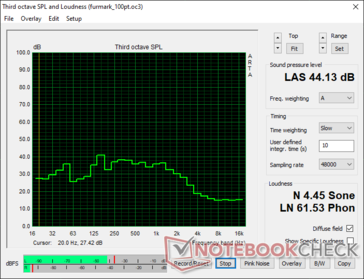
Pros
Cons
Verdict
AMD's days of being the underdogs in the GPU market are officially over with the Radeon RX 6900 XT. The RX 6900 XT has the mettle to truly take on NVIDIA's flagship offerings, and we see that being reflected in most tests. With the latest Navi 2x cards, AMD seems to have adopted a more striking design complete with an RGB Radeon logo and a triple-fan cooler for improved thermal performance compared to the blower-style coolers we've been seeing so far.
The RX 6900 XT does hold its fort pretty well, even beating the RTX 3090 in select synthetic benchmarks. Considering the US$999 MSRP of the RX 6900 XT vs. the US$1,499 MSRP of the RTX 3090, the slight performance deficit is well-offset by the US$500 price difference. Moreover, we see excellent numbers in professional applications as well making the RX 6900 XT a good choice if your workflow isn't CUDA-dependent.
Gamers who have been wanting to get a flagship AMD card that can be a viable alternative to that of NVIDIA's will find the RX 6900 XT worthwhile, especially so if the games are optimized for AMD hardware. Radeon Software Adrenalin drivers have come a long way in terms of offering a stable experience, and the inclusion of both Ryzen and Radeon tuning in the latest version is definitely a step in the right direction. Smart access memory, while good to have, is currently of little consequence in the vast majority of today's games.
AMD, however, currently lags behind NVIDIA in two technologies, which are now being fast-embraced by game developers — ray tracing and AI-based super sampling. The RX 6900 XT's ray tracing performance is definitely RTX 2080 Ti-class, but it is not really competitive with what the RTX 3080 and RTX 3090 can offer. Also, AMD is yet to come up with a super sampling solution on the lines of NVIDIA's Deep Learning Super Sampling (DLSS).
The eight additional CUs in the RX 6900 XT do not seem to offer a significant performance gain over the 72-CU RX 6800 XT. Therefore, if you are primarily looking for a gaming-only card, the RX 6800 XT at US$649 MSRP would probably be a better investment.
The AMD Radeon RX 6900 XT is just what Team Red's fans have been clamoring for since a long time in order to keep the competition in check. While the RX 6900 XT does not wholly beat the NVIDIA GeForce RTX 3090, it is within striking distance and at times can beat NVIDIA's top dog by a fair margin making it a good choice if next generation technologies such as ray tracing and AI-based super sampling aren't primary concerns."
The RX 6900 XT does not exactly help in saving on your electricity bills. However, it is still comparatively more economical in power guzzling when compared to the RTX 3080 and the RTX 3090. While noise levels under load are tolerable, the temperatures seem to be on the higher side leading to sporadic throttling in our stress tests.
With RDNA 2 becoming the staple graphics hardware in next-gen consoles such as the Xbox Series X/S and the PlayStation 5, there's a lot of potential cross-platform advantage that developers can leverage. Hopefully, AMD would also improve whatever it can on the ray tracing front and offer a viable DLSS alternative in the months to come.
Price and availability
AMD is currently running short on reference Radeon RX 6900 XT cards but has promised to continue offering the reference design. While reference card stocks are expected to replenish soon, add-in board (AiB) partner cards from the likes of MSI, Sapphire, XFX, and PowerColor can be availed online depending on the stock situation.
At the time of this writing, the Sapphire RX 6900 XT is available on Amazon for US$2,388 while the XFX Speedster MERC 319 Radeon RX 6900 XT is available for US$2,661.99 on Walmart, both of which are quite significant markups. AiB cards on Best Buy and Newegg continue to be out of stock at the time of publication.
We recommend keeping a tab on availability of AMD reference cards and wait for prices of the AiB versions to drop in the coming weeks before taking the plunge.




